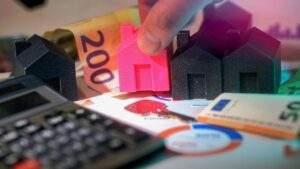
The BRRRR method has become a popular strategy for real estate investors looking to maximize their returns and build a real estate portfolio. Whether you’re a first-time homebuyer looking to invest in a property or a seasoned investor aiming to refine your approach, the BRRRR method can help you evaluate real estate deals effectively. This strategy, which stands for Buy, Rehab, Rent, Refinance, and Repeat, allows you to recycle your investment capital while growing your wealth over time. In this blog, we’ll break down how to evaluate deals using this method, tailored to both new and experienced investors.
What is the BRRRR Method?
Before diving into how to evaluate deals, let’s first define the BRRRR method. It’s a process that allows you to buy undervalued properties, renovate them, rent them out, refinance the property to recover your invested capital, and then repeat the process to scale your portfolio.
The BRRRR method is effective for investors who want to scale quickly without waiting years for property appreciation or saving up for a new down payment after each purchase. It also works well for first-time investors or homebuyers who are looking to get involved in the real estate market with a minimal initial investment.
Step 1: Buy — Finding the Right Property
The first step in the BRRRR method is to purchase a property. This is where evaluation is critical, as the key to success is buying a property at a price that allows you to add value through renovations.
For First-Time Homebuyers: If you’re considering the BRRRR method as a first-time homebuyer, your goal will be to find a property that has the potential to appreciate and generate rental income after you’ve made improvements. Look for homes in emerging neighborhoods where values are expected to rise. Foreclosures, auctions, or properties owned by motivated sellers can provide opportunities for good deals.
For Experienced Investors: Seasoned investors know that the best deals often come from properties that others overlook—typically those that need significant repairs or are located in neighborhoods undergoing revitalization. When evaluating a property, take into consideration not just the price but also its location, potential for future growth, and the overall condition of the property.
Key Factors to Evaluate When Buying a Property:
- Location: Look for neighborhoods with potential for future growth. Proximity to schools, public transportation, and amenities like shopping centers can help increase demand.
- Property Condition: A property that needs significant repairs is ideal, as long as the renovation costs won’t eat into your profits. A home inspection is essential to uncover hidden issues.
- Comparable Market Analysis (CMA): Always analyze the local market to assess the potential resale value and rental income. You’ll want to purchase a property below market value to leave room for profit after renovations.
Step 2: Rehab — Renovating the Property
The second step is rehabbing the property to add value. This step can make or break the success of your investment, so it’s important to carefully plan your renovation.
For First-Time Homebuyers: If you’re new to rehabbing, it might be best to start with smaller, less complex projects. Look for homes that need cosmetic improvements, such as new flooring, paint, or kitchen updates. These improvements are relatively affordable and can significantly increase a property’s value.
For Experienced Investors: More experienced investors often take on larger renovations, such as fixing structural issues or expanding the property. When rehabbing, focus on improvements that will provide the most value for the least cost, such as updated kitchens and bathrooms, new flooring, and modernized landscaping. Always estimate your rehab costs carefully to avoid going over budget.
Tips for Renovating Effectively:
- Set a Clear Budget: Determine how much you are willing to spend on renovations and try to stick to it. Unexpected issues often arise, so leave some room for flexibility.
- DIY vs. Professional Help: For smaller repairs, you might consider doing it yourself to save money. For more complicated tasks, like plumbing or electrical work, hiring professionals is a must to ensure quality and safety.
- Renovation Timeline: Delays in renovations can significantly impact your profits, so establish a clear timeline and work with reliable contractors.
Step 3: Rent — Finding Tenants
Once your property is renovated, the next step is to rent it out. Renting provides you with ongoing cash flow, which will be important when it comes time to refinance.
For First-Time Homebuyers: As a first-time investor, you might be renting out the property for the first time. It’s important to understand local rental laws and regulations, as well as how to set a competitive rent price. Research the rental market in your area and price your property based on comparable listings.
For Experienced Investors: For seasoned investors, renting the property should be a smooth process if you have a good tenant screening process in place. Use online tools to advertise your property, screen potential tenants, and ensure that your rental is priced competitively. A solid tenant can ensure that your property remains profitable and that your cash flow remains steady.
Steps for Renting Out Your Property:
- Screen Tenants: Check tenants’ backgrounds, credit scores, employment, and rental history. A reliable tenant can help prevent issues down the road.
- Set a Fair Rent Price: Look at comparable properties in the area to determine a fair rent price. Overcharging or underpricing can affect your ability to attract tenants.
- Understand Local Laws: Ensure that you comply with all local landlord-tenant laws, including those related to security deposits, eviction procedures, and habitability requirements.
Step 4: Refinance — Recovering Your Capital
Once the property is rented, the next step is to refinance it. Refinancing allows you to take out a new loan based on the increased value of the property (after renovations) and pull out your invested capital, which you can use to purchase another property.
For First-Time Homebuyers: If you’re a first-time homebuyer using the BRRRR method, refinancing may seem daunting. However, it’s a crucial part of the strategy. When you refinance, you’re essentially replacing your original loan with a new one based on the property’s after-repair value (ARV). This allows you to take out most, if not all, of your invested capital.
For Experienced Investors: Seasoned investors have likely refinanced properties before. When refinancing, it’s important to work with a lender who understands the BRRRR strategy and can offer competitive rates. Your goal is to minimize your interest rate while maximizing the cash you can pull out.
Tips for Refinancing:
- Wait for the Right Time: Lenders typically require you to own the property for at least six months before refinancing. However, some programs allow for refinancing sooner.
- Have Your Documents Ready: Ensure you have all the necessary documents, including your renovation costs, rental income, and proof of the property’s increased value.
- Consider Cash-Out Refinancing: This option allows you to take out the equity in the property, which you can use to reinvest in another property.
Step 5: Repeat — Scaling Your Portfolio
The final step is to repeat the process. After refinancing, you’ll have access to the capital needed to buy another property, and you can continue to scale your portfolio.
For First-Time Homebuyers: If you’re just starting out, you might want to repeat the BRRRR method once or twice before scaling up significantly. This approach will give you experience with the process and help you refine your strategy for future investments.
For Experienced Investors: Experienced investors use the BRRRR method to scale quickly. After completing several deals, you’ll have refined your systems for buying, rehabbing, renting, refinancing, and repeating. This allows you to grow your portfolio rapidly while minimizing risk.
Key Takeaways
The BRRRR method is a powerful strategy for both first-time homebuyers and experienced investors. By focusing on buying undervalued properties, adding value through renovations, renting them out, refinancing to recover your investment, and repeating the process, you can build a real estate portfolio that generates passive income and long-term wealth.
For first-time buyers, the key is to start small and gain experience with each deal. For experienced investors, the BRRRR method offers a proven way to scale your portfolio while recycling your investment capital. With careful evaluation and attention to detail at every step, you can successfully use the BRRRR method to achieve financial freedom through real estate.






